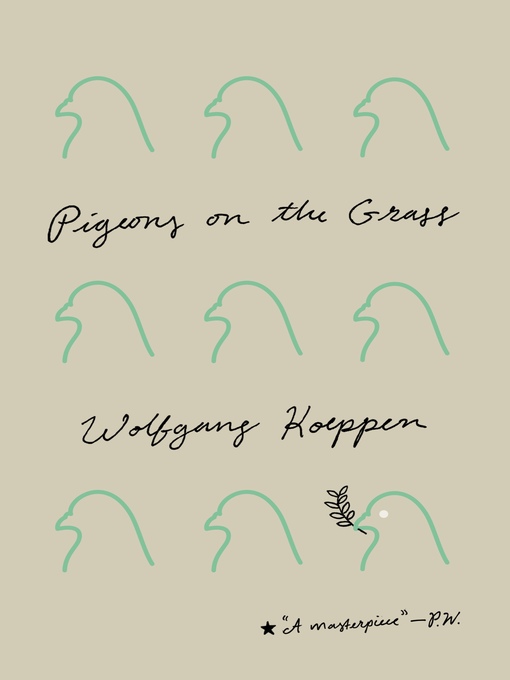
Pigeons on the Grass
کتاب های مرتبط
- اطلاعات
- نقد و بررسی
- دیدگاه کاربران
نقد و بررسی

Starred review from October 12, 2020
Set in Munich in 1948, German writer Koeppen’s wrenching novel, first published in 1951, portrays a society coping with the aftermath of WWII. The panoramic narrative cuts back and forth across the intersecting lives and experiences of characters struggling to navigate “a lost world” with dignity and decorum, among them a failed writer and his heiress wife, who has been reduced to pawning her family heirlooms; a Black sergeant in America’s occupying force and his German lover, who is carrying their child; a tour bus full of American schoolteachers; a psychiatrist who sells his blood for money; and a Black traveler from America and his elderly German porter. Koeppen (1906–1996) alternates between humor and tense drama in poetic passages and run-on sentences, and he endows his characters with classical attributes—a character named Odysseus Cotton, a prostitute who sees herself as a Circe figure—that conjure a sense of a shabby reality touched incongruously by myth. Hofmann’s brilliant translation, meanwhile, finds pathos in the characters’ quest for meaning and significance in a world of randomness and chance. Koeppen’s masterwork soars.

Starred review from October 1, 2020
A kaleidoscopic narrative that follows a disparate cast of characters whose lives accidentally intersect during a single day in Munich, Germany, in 1948. First published in 1951 and now available in an inspired new translation, this deeply sardonic, profoundly compassionate novel takes the reader onto the ruined postwar streets of Munich and inside the minds of the city's inhabitants, their heads "still confused by hunger and explosions." What seems at first to be a random parade of characters, each portrayed in alternating sections that seamlessly shift the novel's third-person point of view--from that of a child to a psychologist to an old Nazi to an American soldier and so on--gradually coalesces to form a flawless, interconnected pattern of private dramas and chance meetings. Stories and lives overlap at an accelerating pace yet each protagonist is clearly defined, just as each is at the mercy of fate. Desperation fills the air. Doctors "queued to sell their blood...the only thing they had to sell." But there is also, among some, a bewildered nostalgia presented with a garnish of irrepressible ironic wit. "Things were different, under Hitler!" one character hears her father lament. "Things had some gusto then." The novel reaches its crescendo with the onstage appearance of a famous intellectual, the theme of whose lecture is "the deathless soul of the West." When he arrives, the author notes, "photographers dropped on one knee like archers"--an image typical of the gems scattered liberally throughout the novel. And what follows is indeed a comical skewering of pomposity. At the critical moment, technology--the hope of the future--fails and great thoughts turn into electronic squawks, leaving an adoring crowd mystified. This portrait of despair and endurance amid postwar ruin is nothing less than a miniature masterpiece.
COPYRIGHT(2020) Kirkus Reviews, ALL RIGHTS RESERVED.

























دیدگاه کاربران